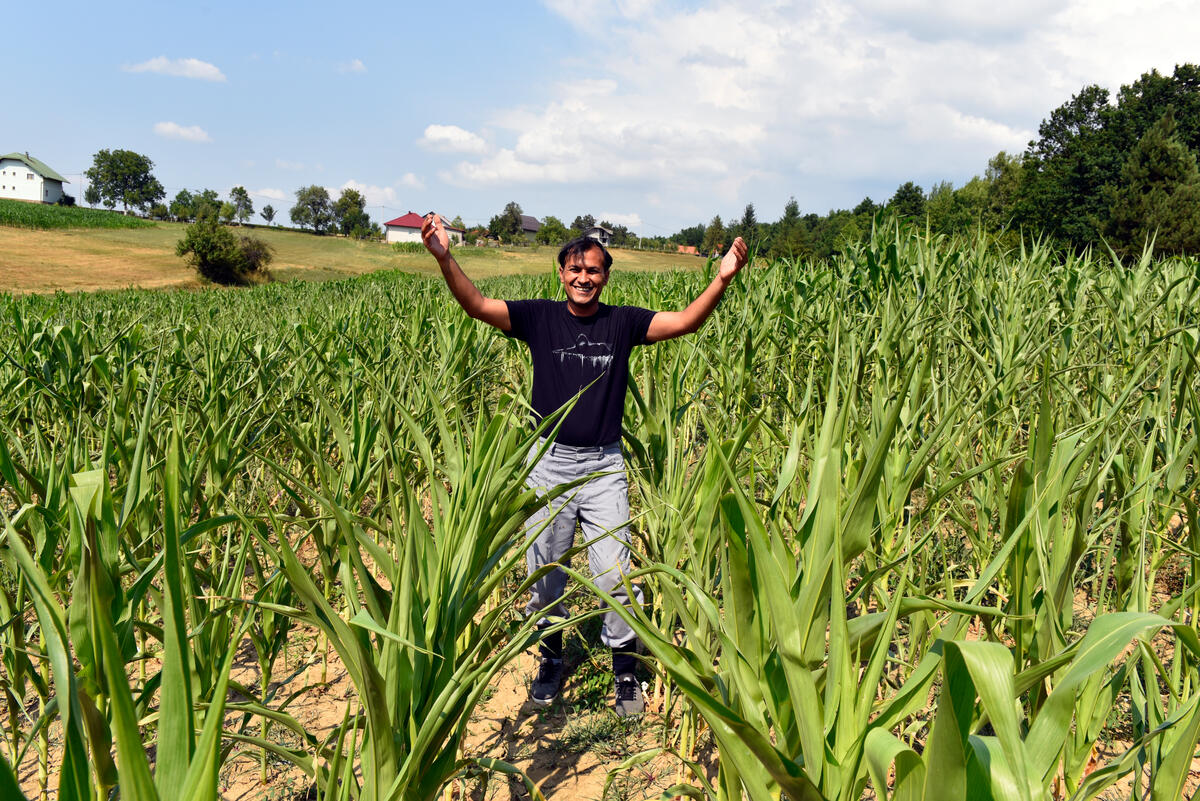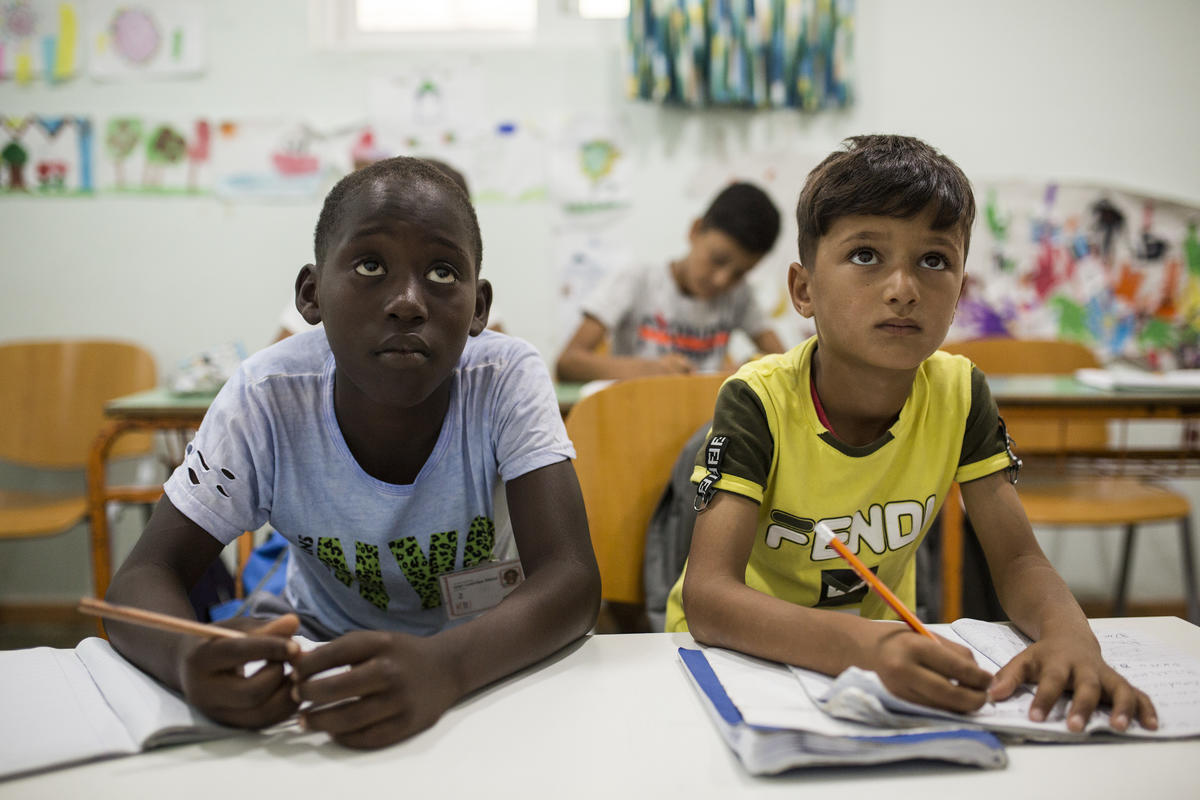One millionth returnee goes home in Bosnia and Herzegovina
One millionth returnee goes home in Bosnia and Herzegovina
21 September 2004
GENEVA - One million former refugees and displaced persons have returned home in Bosnia and Herzegovina, the UN refugee agency announced Tuesday, describing it as a significant milestone in the long process of rebuilding a nation shattered during the 1992-95 war.
In all, 1,000,473 people out of a total of more than 2 million people forcibly displaced during the war had returned to their home areas by the end of July according to the latest monthly figures compiled by UNHCR. Of these, 440,147 were refugees who had fled Bosnia and Herzegovina, and 560,326 were forcibly displaced inside the country.
"The significance of reaching this landmark figure cannot be overstated," said UN High Commissioner for Refugees, Ruud Lubbers. "It demonstrates the determination of so many people in Bosnia and Herzegovina to close this devastating chapter in their lives. It also demonstrates the wider benefits for the international community of devoting considerable effort and resources to resolving the problems in refugees' regions of origin: during the early 1990s Western Europe was receiving hundreds of thousands of asylum seekers a year from Bosnia and Herzegovina. Now they are receiving a fraction of that."
Nearly three-quarters of the total returned to the Federation of Bosnia and Herzegovina, and one quarter to Republika Srpska. Some 20,000 have returned to Brcko District, which is administered separately from the two Entities enshrined in the 1995 Dayton Peace Agreement.
"While celebrating the return of so many," Lubbers said, "we should not forget that for a significant proportion of them, it was an extremely hard and courageous decision to make, in the face of a multitude of legal, economic and social difficulties. It is now almost nine years since Dayton and tremendous progress has been achieved, but there are still many difficulties to overcome, and continued support from the international community will remain essential for several years to come."
UNHCR's Representative in Sarajevo, Udo Janz, said that although the overall rate of returns has fallen sharply over the past two years, he was nevertheless encouraged by the high proportion of people returning to areas where they are in a minority - including many of the places that were worst hit by the conflict and the accompanying large-scale killing and atrocities. "Clearly the situation remains volatile in many parts of the country, so the challenge before us now is to consolidate the returns that have taken place and make them sustainable," said Janz. "
"During the first seven months of 2004," he continued, "a total of 15,470 people returned. Of these, 10,589 - or two-thirds - were so-called minority returns, and there have been significant increases in some areas, including for example in the eastern part of Republika Srpska, including in Bratunac, Srebrenica and Zvornik."
Since 1996, 446,795 people - or just under half the total number of returnees - have returned to municipalities where they are currently in a minority.
"It is vital that the international community, together with the authorities of Bosnia and Herzegovina at all levels, continue to assist those who have returned or have decided to do so in the future," said Janz. "The property laws, which allowed pre-war owners to repossess their property occupied by others has been a critical element in this success story. But the returnees still need help to rebuild their destroyed houses. They still need help to earn a living. Such support is especially required for minority returnees."
UNHCR first established an office in Bosnia in 1991, before the conflict broke out. By 1995, the agency was spearheading a huge relief operation benefitting around 1.5 million people. The effort included running relief convoys and the Sarajevo airlift - the longest-running airbridge in history. Under the terms of the Dayton Agreement, UNHCR shifted its attention to supporting the safe and sustainable return of refugees and the internally displaced. Since then, in cooperation with numerous other international agencies and NGOs, UNHCR has helped reconstruct thousands of houses, and engaged in a wide range of important reintegration, capacity-building and income generation projects
In total, UNHCR has spent over $500 million in project funds in the country since 1995. But as humanitarian funds in support of the return process are steadily declining, the agency is relying increasingly on the help of development agencies and the banking sector to bridge the gap that lies between humanitarian assistance and sustainable development.
"There is still so much to be done," said Janz. "Outstanding tasks include the repair of essential infrastructure, housing, job creation, and investments in the health and education sectors. It takes a long time to repair a country as badly damaged as this one was - physically, economically and psychologically."
A large number of refugees from Bosnia and Herzegovina remain in the region, including around 100,000 living in Serbia and Montenegro and in Croatia. There are believed to be around 50,000 others living in other parts of Europe or elsewhere who have not yet found a durable solution. And a further 313,000 are still displaced within Bosnia and Herzegovina itself. The remaining half a million refugees who fled the war are thought to have found a solution, including through citizenship, elsewhere in the world.








